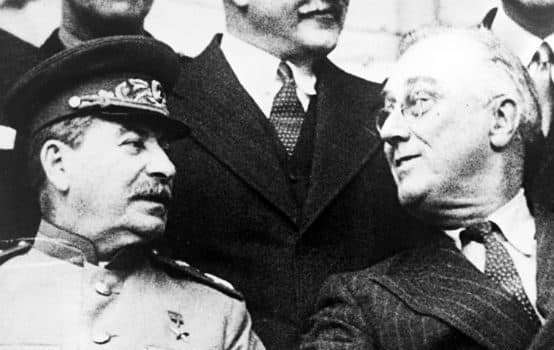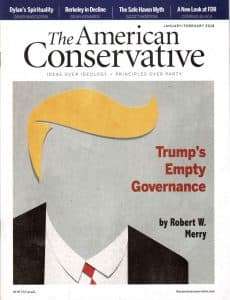
The Cold War: A World History, Odd Arne Westad, Basic Books, 662 pages
In a new introduction to his classic novel, The Spy Who Came in from the Cold, John le Carré evokes memories of the early days of the era that came to be known as the Cold War, when he served in the intelligence service at the British Embassy in West Germany, located in what was then the capital city of Bonn. As the wall separating East and West was being erected in Berlin there was no real sense of a transition from the “hot” war that had ended in 1945 to the new “cold” one, he recalls. Instead, World War II was seen in retrospect as a distraction. “Now that it was over, they could get on with the real war that had started with the Bolshevik Revolution in 1917 and had been running under different flags and disguises ever since,” writes le Carré.
From the perspective of Harvard University Professor Odd Arne Westad, who was a boy in Norway in the 1960s when le Carré was stationed in the British Embassy in Bonn, it was indeed the Cold War—and not the Second World War—that defined the political history and the intellectual zeitgeist of the 20th century and that shaped the evolution of its international system. As Westad reminds us, the term “cold war” was coined by George Orwell in 1945 to denote the capitalist-socialist antagonisms between the United States and the USSR after the defeat of Nazi Germany.
Westad goes beyond that characterization and contends that the Cold War was an ideological clash between socialism and capitalism that was born from the global economic, social, and technological transformations of the late 19th century—peaking between 1945 and 1989 against the backdrop of the geostrategic confrontation between the world’s two superpowers and the rise of a bipolar international system. Then in the late 20th century, in response to the global economic, social, and technological transformations of that period, this grand ideological clash went through a process of slow decline and was finally met with sudden death, although its consequences can still be with us, according to Westad.

This article appears in the January/February 2018 issue of The American Conservative.
Thus does Westad place the Cold War into a hundred-year perspective that subsumes other seminal events of the last century, including World War II, into a rather neat framework. There is something intellectually and emotionally disorienting about this. At times it seems that the author is relegating Auschwitz and Hiroshima into historical footnotes and treating Adolf Hitler as an extra, not as one of the star villains, in his grand epic. Indeed, the way Westad integrates World War II into his historical narrative flies in the face of the common storyline we are familiar with: that it was a conflict between freedom and oppression, between the values of the liberal West and those of its ideological foes, the two military dictatorships of Nazi Germany and Imperial Japan.
But, if the global ideological conflict during the hundred years from the 1890s to the 1990s was between socialism (Westad uses that term interchangeably with communism) and capitalism, World War II had very little to do with that grand struggle. It was strictly about defeating German and Japanese expansionism in Europe and Asia. As you read about how the United States and the USSR made their diplomatic and military moves in that very hot war—such as the American development of the atomic bomb or the Soviet response to the 1944 Warsaw uprising—you get the impression that those occupying the White House and the Kremlin were more concerned about how their policies would play in Moscow and Washington than about how they would affect the dictators in Berlin and Tokyo.
In Westad’s narrative, the United States and the USSR were “accidental allies” in a global war brought on by their mutual enemies. It was a shotgun marriage shaped by their immediate needs and not an alliance based on long-term cooperation aimed at advancing common causes—like, for example, the North Atlantic Treaty Organization over the past half century. According to this script, our hero could have had a one-night stand with the socialist behemoth, but he could only marry a member of the capitalist tribe.
Westad does not speculate about what would have happened if Japan had not attacked the United States and Russia had not invaded Germany, and his socialism vs. capitalism narrative does not seem to hold when one considers that Hitler’s policies were driven by his fierce anti-communism (which also identified Judaism with Bolshevism), and yet a fierce anti-communist leader such as Winston Churchill would not consider allying his country with Nazi Germany in a common struggle against the Soviet Union. At the same time, the notion that the great confrontation between the socialist bloc and the capitalist nations was inevitable may explain why U.S. President Franklin Roosevelt’s hopes of cooperating with the Soviet Union in a new international order of peace, freedom, and human rights proved to be a mere fantasy.
In a way, what makes The Cold War: A World History such an original work and absorbing mind teaser is its challenge to the way we think about the not-so-distant past, taking a hundred-year perspective that, for example, does not view the construction of the Berlin Wall in 1961 as a defining event of the Cold War but as a diplomatic interlude that helped avert a direct military confrontation between the Soviets and the Americans. After all, why read a 720-page book that chronicles the history of a period that is quite familiar to most of us? Is there really anything more that can be said or written about, say, the 1962 Cuban Missile Crisis?
Probably not. And Westad doesn’t provide much new information about that crisis. But he places it in the context of his grand narrative, suggesting that in the global struggle between socialism and capitalism, the Soviet Union, the carrier of the socialist torch, lost the most in that tense standoff. According to Westad, Soviet leader Nikita Khrushchev “believed that Communism was on the up worldwide, and that his historic role was to steer the Soviet Union through a period in which, through the laws of history itself, the global balance of forces tipped in its direction.” But he also knew that a nuclear war would destroy that historical achievement, and hence he had to back down because “he wanted to celebrate the triumph of Communism, not eulogize at its funeral pyre.”
There is a lot of Hegel and a certain amount of historical determinism in Westad’s approach. Reality is capable of being expressed in rational categories, and the great puppeteer of history forces us to play our predictable role in his show. In this view the social and economic upheavals that left Europe unhinged at the end of the 19th century made it inevitable that socialism and capitalism would clash and in the process transform not only European politics but the entire international system.
To paraphrase the title of Luigi Pirandello’s famous play, Six Characters in Search of an Author, two ideologies were in search of respective political powers that would promote them. They found them in the rising United States and the new Bolshevik Russia, both being transformed into supercharged empires with powerfully felt international missions. And this occurred just as the ideological divide between capitalism and socialism was being sharpened.
The two empires evolved as part of an epoch of European predominance, embracing concepts of modernity, including the expectation that the European Enlightenment project could and should spread worldwide. But they parted ways when it came to defining that project.
The notion of a civil war that had engulfed Europe following the French Revolution, giving rise to competing ideologies and political movements, is not original. That civil war lasted 200 years, from 1789 to 1989, when another Hegelian political philosopher informed the world that history had come to an end (a pronouncement that Francis Fukuyama would have to dial back significantly as events engulfed it). Similarly, several astute observers of international relations had predicted at the end of the 19th century and the early 20th century that the United States would emerge as one of the world’s two leading powers and warned that a confrontation between the American sea power and the Russian land power would take place sooner or later. In some respects, that competition may be ongoing.
Yet there is something contrived in Westad’s suggestion that power and ideology were destined to merge and drive this global conflict, with American liberal internationalist Woodrow Wilson adhering to the belief that it was the mission of the United States to set the world right; and the Russian Communist Vladimir Illich Ulyanov, or Lenin, intent on employing his nation’s power to spread the Marxist gospel worldwide. According to this view, these competing messianic impulses created the conditions for the ensuing Cold War.
♦♦♦
But there was nothing inevitable about the United States intervening in the Great War on the side of the Entente Powers or about the Bolshevik takeover of Russia, and, as Westad himself points out, American and Russian involvement in World War II came in response to Japanese and German aggression that threatened their respective core interests. At the same time, neither capitalism nor socialism ever constituted a coherent ideology; nor were the political movements seeking to represent these principles ever in agreement on what capitalism or socialism actually stood for. Even today, major differences exist between so-called Anglo-Saxon capitalism and the German social-market model, or between Scandinavian-style socialism and the model embraced by France, not to mention the moribund Soviet one. And most of the contemporary economic systems tend to follow a mix of capitalist and socialist policies.
Westad recognizes these complexities and seems to lament the failure of the European social-democratic movements of the pre-World War II era to promote their ideological perspectives as an alternative to both America’s wild capitalism and communism. But by incorporating the Cold War into a hundred-year global ideological epic struggle, Westad designs a theoretical straightjacket that he then tries to escape as he chronicles the more nuanced history of the actual Cold War. As he points out, in many cases national interests, not ideologies, drove the policies of Washington and Moscow, not to mention those of their respective partners and other global players.
And when American and Soviet leaders became too fixated with ideological considerations, disasters tended to ensue, whether in Southeast Asia, the Middle East, or Latin America. Hence the Kennedy brothers’ obsession with the supposed threat of Fidel Castro to the advancement of capitalism in the hemisphere mirrored Khrushchev’s romanticizing of the Cuban leader as a successor to the Russian revolutionaries of 1917. This helped shape American and Soviet policies that almost led to a nuclear war between the two superpowers.
Imagine: A guerrilla fighter turned military dictator ruling over a Caribbean island—in a way, a nobody in the larger scheme of things—playing a leading role in a Cold War drama with the potential to destroy civilization. Historians and political scientists still debate whether Cuba’s Castro, Vietnam’s Ho, Yugoslavia’s Tito, or even China’s Mao were first and foremost leaders of nationalist movements or really in the main promoters of the communist ideology. There are no simple answers, but it seems that when American and Russian policymakers examined international developments through their ideological spectacles and regarded them as acts in the grand global battle between capitalism and socialism, the result most often was decisions that ultimately harmed their national interests.
The American intervention in Vietnam constitutes a prime example of that kind of strategic miscalculation by a great power that was determined to view what was taking place in Southeast Asia through the ideological prism of the Cold War despite clear evidence that Ho Chi Minh was defending the national legacy of Vietnam against outside incursions and wasn’t striving to expand the reach of communism in the region.
It isn’t difficult to spin many scenarios under which Washington could have made a pragmatic deal with Ho Chi Minh serving the long-term interests of both the United States and North Vietnam. Indeed, following the U.S. military withdrawal from the country, Communist Vietnam ended up going to war against Communist Cambodia, which eventually led to a military confrontation with Communist China, reflecting the national interests of these regional players. That also explains why Vietnam, still ruled by a communist regime, has been strengthening its ties with the United States as part of a strategy to contain the common challenge of Chinese expansionism.
♦♦♦
Westad’s discussion of the Cold War competition in South Asia and the Middle East highlights the other side of American and Russian interventions in the Third World: governments and political movements masquerading as proponents of socialism or capitalism in hopes of drawing the two superpowers to their side. It would be a distortion to argue that Egypt’s Gamal Abdel Nasser or India’s Indira Gandhi—or for that matter the Vietnamese, Egyptians, Brazilians, Saudis, Iranians, and Israelis—did not care about whether socialism or capitalism would become the dominant global force. But consideration of national interests and not ideological fervor explains why these and other Third World leaders and governments aligned themselves at one point or another with either Washington and Moscow or embraced the posture of “non-alignment.”
Indeed, after coming to power in the 1950s, Nasser hoped the United States would help advance his Arab nationalist agenda, but when that didn’t happen he sought support from the Soviets, which placed him in the position of a Moscow ally. But Moscow was never sure. The question of whether Nasser and other Arab nationalist leaders were genuinely committed to socialism preoccupied Soviet leaders, who commissioned numerous studies concluding that Arab societies were still in the bourgeoisie stage of political development but could reach the revolutionary promised land in the future.
But Nasser’s successor, Anwar Sadat, decided that Egypt’s national interests would best be served by switching to the American side in the Cold War and by adopting capitalist economic policies. Before changing Egypt’s foreign policy orientation, however, Sadat launched a military attack against Israel in 1973 that led to one of the most dangerous moments in the relationship between Egypt’s protector, the Soviet Union, and Israel’s ally, the United States. But it also created an opening for Washington to act as a diplomatic mediator between Egypt and Israel and to eventually ensure that Cairo would emerge as one of America’s leading partners in the region.
It therefore may not be surprising that the discussion of the Arab-Israeli conflict at the time was framed as an extension of the Cold War, with the assumption that when the superpower rivalry would come to an end Arabs and Israelis would probably make peace, as would Indians and Pakistanis, and Ethiopians and Somalis, and that international politics could be explained by treating these and other conflicts as subplots in the big epic of socialism vs. capitalism. But 25 years after the Cold War’s end, Arabs and Israelis are still fighting; tensions rise and fall between India and Pakistan, now nuclear powers, over Kashmir and other issues; and developments in the Horn of Africa, in the former Yugoslavia, in the former Soviet Union, and of course, in the Greater Middle East, have ignited new national, ethnic, sectarian, and tribal wars. Even expectations that the reunification of Germany and the creation of the European Union would help re-energize the Enlightenment project in the aftermath of the Cold War have failed to materialize.
Westad gives much credit to Mikhail Gorbachev for the end of the Cold War and criticizes the United States for failing to bolster the last Soviet leader’s effort to reform communism and making things worse by launching wars in Iraq and Afghanistan. But here he misses an important point: The bipolar nature of the international system during the Cold War (to which he devotes all of two pages), sustained by the threat of nuclear annihilation, helped maintain peace in Europe, ensured that hot wars such as those in Korea, Vietnam, and the Middle East would come to an end, while setting constraints on the ability of the superpower partners to draw those powers into new and dangerous regional conflicts.
In fact, that bipolar system, for all of its dangers and fears, engendered certain checks and balances on the use of military power by the Americans and the Soviets. The United States would have not invaded Iraq and promoted its Freedom Agenda in Libya and the rest of the Middle East if the Soviet Union were still around, providing protection for Saddam Hussein and its other satellites in the region. By way of illustration, compare the sense of chaos and anxiety that dominates the international system today with the kind of order and stability provided by the bipolar system. You don’t have to feel nostalgic about the Cold War to recognize what we are missing now.
Leon Hadar, a TAC contributing editor, writes regularly for National Interest Online, Asia Times, Haaretz, and Quillette.
Sourse: theamericanconservative.com






